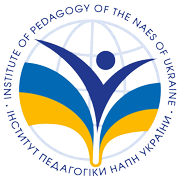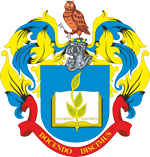Peer-review process
The process of the scientific articles’ manuscripts reviewing in the collection of scientific papers "Pedagogical Discourse"
- The process of the scientific articles’ manuscripts reviewing is carried out in order to adhere to the high scientific-theoretical and practical level of the collection of scientific papers "Pedagogical Discourse" and to select the most relevant scientific articles.
- In the collection of scientific papers "Pedagogical Discourse" for the review of scientific articles the double (blind) review is used:
- The reviewer does not know who is the Author / Authors of the article.
- The Author / Authors of the article do not know who is the Reviewer.
- Scientific articles, which are submitted through the Open Journal System platform (http://ojs.kgpa.km.ua/index.php/peddiscourse) are previewed by the responsible editor of the issue on the compliance of their design with the requirements for writing and drawing articles that posted on the site (http://ojs.kgpa.km.ua/index.php/peddiscourse/about/submissions).
- The primary expert review of a scientific article is carried out by the Editor-in-Chief.
- The Editor-in-Chief assigns the Reviewer (member of the editorial board or external reviewer). A Reviewer can only be a person who is a specialist and has publications in the appropriate field (where the article is from).
- After reviewing a scientific article, the Reviewer shall note:
- The article can be recommended for publishing without changes;
- The article can be recommended for publishing with partial changes;
- The article can be recommended for publishing with significant changes;
- The article can not be recommended for publishing (reject).
If the Reviewer recommends the article for publishing after revision (taking the comments into consideration) or does not recommend the article for publishing, the reason should be stated into the review.
For the reviewing, the Reviewer uses the “Form for the Reviewer”, which is developed by the editorial board and forwarded to the Editor-in-Chief for decision making.
- When reviewing scientific articles the Reviewers must:
- to pay attention to the relevance of the submitted manuscript of the article, its theoretical and (or) practical significance;
- to pay attention of the Editor-in-Chief to any significant similarity between the submitted manuscript and any other published article or manuscript, as well as to evaluate the compliance by the author / authors of scientific ethics, the correctness of references to the using source;
- to evaluate the degree of using the latest achievements in the industry from which the manuscript of the article was prepared;
- to evaluate the correctness of the used research methods and calculations performed (in the case of an experimental article);
- to evaluate the degree of correctness of conclusions in the article’s manuscript with available scientific concepts, provisions, results of research by other authors;
- to substantiate the conclusions rather convincingly;
- to evaluate the contribution of each Author/Authors of the article's manuscript into solving the problem;
- to evaluate the logic of the laying out the material in the manuscript of the article, its conformity with the scientific style, indicate the authenticity and validity of the conclusions;
- to provide the review of the article’s manuscript in time;
- should not use or disclose unpublished information contained in the submitted manuscript of the article, unless otherwise agreed by the author / authors.
- If necessary, the manuscripts of the articles can be sent for additional reviewing, in case:
- the Editor-in-Chief is not satisfied with the quality and level of the submitted review;
- the article contains provisions that are quite controversial.
- The Editor-in-Chief sends a review to the Author /Authors of the manuscript with a motivated conclusion about the further passage of the article’s manuscript or the refusal to publish.
















